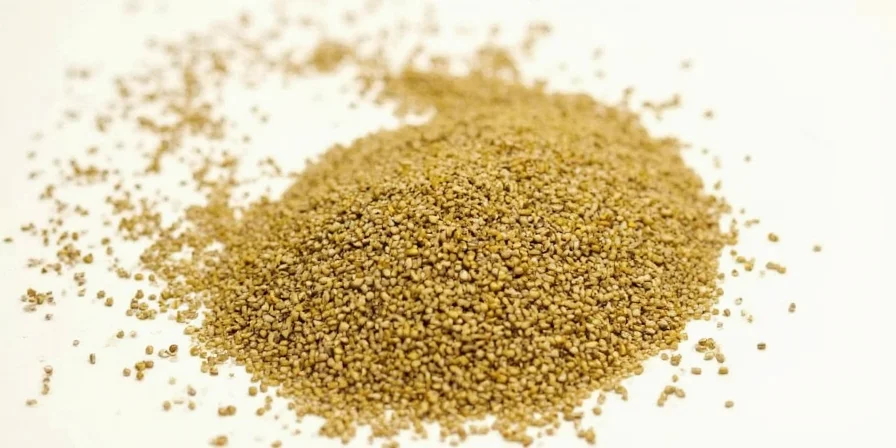Mustard seeds are tiny powerhouses used globally in cooking, available in yellow, brown, and black varieties. They transform when activated by moisture, creating the pungent flavor we associate with mustard. This guide answers exactly what mustard seeds are, how to use them properly in cooking, and which type works best for your needs - with science-backed techniques you can apply immediately.
Table of Contents
- What Are Mustard Seeds? (Simple Explanation)
- Mustard Seed Types: Yellow vs Brown vs Black Compared
- 5 Mustard Seed Cooking Techniques That Actually Work
- How Different Cuisines Use Mustard Seeds
- Why Mustard Seeds Pop and Create Heat: The Science
- Mustard Seeds Benefits: What Research Shows
- Mustard Seed Myths Busted
- Mustard Seed Varieties Comparison Table
- Mustard Seeds FAQ
What Are Mustard Seeds? (Simple Explanation)
Mustard seeds come from Brassica plants and are used worldwide in cooking. Despite their small size (about 1-2mm), they pack powerful flavor when activated properly. The three main types differ significantly:
- Yellow mustard seeds are mild and work best for American-style mustard and pickling
- Brown mustard seeds offer moderate heat perfect for Dijon mustard and Indian tempering
- Black mustard seeds deliver the strongest flavor, traditionally used in South Indian cooking

Mustard Seed Types: Yellow vs Brown vs Black Compared
Choosing the right mustard seed makes or breaks your dish. Here's what matters most:
| Type | Flavor Profile | Best Cooking Uses | Heat Level |
|---|---|---|---|
| Yellow | Mild, slightly tangy | American mustard, pickling, salad dressings | ★☆☆ |
| Brown | Warm, nutty, moderately spicy | Dijon mustard, Indian tadka, marinades | ★★☆ |
| Black | Strong, sharp, intensely flavorful | South Indian curries, specialty pickles | ★★★ |
5 Mustard Seed Cooking Techniques That Actually Work
Professional results start with these evidence-based methods:
- Perfect Tempering Every Time: Heat oil to 325°F (163°C) before adding seeds. This triggers optimal popping without burning - releasing maximum flavor compounds.
- Control Heat Level with Timing: Add vinegar within 10 minutes for milder mustard; wait 20+ minutes for maximum heat development.
- Seed-to-Liquid Ratios That Work: Use 1:3 for spreadable mustard; 1:1.5 for intense paste in marinades.
- Cold Infusion for Pickling: Soak whole seeds in cold water overnight to retain texture while infusing subtle heat.
- Flavor Blending Technique: Combine brown and black seeds (70:30 ratio) for complex heat profiles in curries.

How Different Cuisines Use Mustard Seeds
Mustard seeds appear in kitchens worldwide with distinct applications:
- Indian cooking: Black mustard seeds are tempered in hot oil as the flavor foundation for dals and curries
- French cuisine: Brown seeds create Dijon mustard through controlled fermentation
- American recipes: Yellow seeds form the base of classic yellow mustard and bread-and-butter pickles
- German preparations: Whole seeds add texture to sauerkraut and sausage preparations
- Modern applications: Molecular chefs use mustard extracts in vegan cheese alternatives
Why Mustard Seeds Pop and Create Heat: The Science
The magic happens through a precise chemical reaction:
Inside each seed is sinigrin, a compound that transforms when seeds are crushed and exposed to moisture. The enzyme myrosinase converts sinigrin into allyl isothiocyanate - the compound responsible for mustard's heat. This reaction depends on three critical factors:
- pH balance: Acidic environments (like vinegar) slow the reaction, creating milder mustard
- Temperature: Heating above 140°F (60°C) deactivates myrosinase, stopping heat development
- Timing: Maximum pungency occurs within 15 minutes before gradual degradation
Mustard Seeds Benefits: What Research Shows
Evidence-based health benefits with realistic expectations:
- Nutrition facts: 1 tablespoon provides 15% of daily magnesium and 10% iron (USDA)
- Digestion support: Moderate consumption stimulates bile production for better fat digestion
- Inflammation reduction: Sinigrin metabolites may lower inflammatory markers at 2g daily doses
- Heart health: Monounsaturated fats contribute when replacing saturated fats in diet
- Important note: Consuming raw seeds in excess (>1 tbsp) may cause digestive discomfort
Mustard Seed Myths Busted
Clearing up common misunderstandings:
- Myth: All mustard seeds are interchangeable. Truth: Yellow and black seeds differ genetically, creating distinct flavor compounds - substitution requires adjustments.
- Myth: Mustard seed oil is banned everywhere. Truth: FDA restricts high-erucic versions, but culinary grades (≤2% erucic acid) are permitted in many countries.
- Myth: Raw seeds provide instant detox. Truth: Consuming raw seeds in excess often causes digestive issues rather than benefits.
- Myth: Heat destroys all benefits. Truth: Controlled heating preserves 70% of antioxidants while reducing goitrogens.
- Myth: Mustard seeds cure arthritis. Truth: Topical use shows promise in preliminary studies but lacks conclusive evidence for treatment.

Mustard Seeds FAQ
- Can I substitute yellow mustard seeds with brown ones?
- Yes, but use 25% less brown seeds due to higher sinigrin content. Adjust liquid ratios to maintain texture.
- Do mustard seeds expire?
- Whole seeds retain potency 2-3 years in airtight containers. Ground seeds lose 60% pungency within 6 months.
- Are mustard seeds safe for pets?
- Small quantities (<0.5g/kg body weight) are generally safe. Avoid in cats due to metabolic differences.
- Is mustard seed gluten-free?
- Yes, pure seeds are naturally gluten-free. Verify commercial blends for cross-contamination.
- How do I store mustard seeds?
- Keep in opaque, airtight containers at 50-70°F (10-21°C). Refrigeration extends shelf life by 50%.
- Why does my homemade mustard separate?
- Insufficient grinding or incorrect pH balance. Add 1 tsp honey to stabilize emulsions.
Key Takeaways for Perfect Mustard Seed Use
Understanding mustard seed varieties and activation science transforms your cooking. Yellow seeds work best for mild applications like pickling, brown for balanced flavor in most recipes, and black for intense South Indian dishes. Remember the critical temperature threshold (140°F) that stops heat development, and use the 10-minute vinegar rule to control spiciness. These small seeds deliver maximum impact when used with precision - making them indispensable for home cooks seeking professional results.










 浙公网安备
33010002000092号
浙公网安备
33010002000092号 浙B2-20120091-4
浙B2-20120091-4